Hello, Everyone. Welcome.
Farley carried out his grand vision for Washburn over 25 years as president
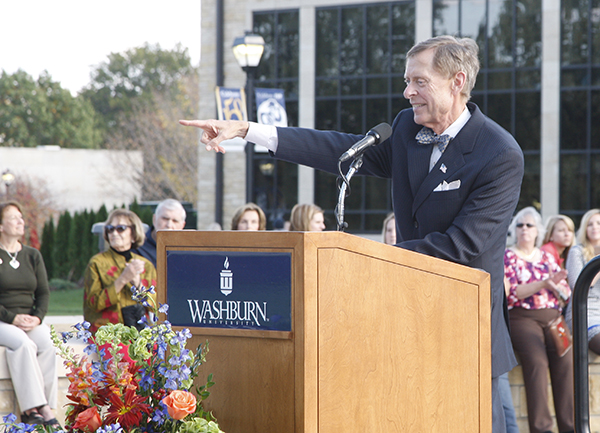
(Jerry Farley speaks at the dedication of Ichabod Plaza and the Welcome Center during the 2015 sesquicentennial celebration. Photo by Bruce Matthews)
By Jeremy Wangler
When Jerry Farley began his presidency at Washburn University in 1997, higher education was at a crossroads. Technology was taking over classrooms and libraries. Accelerated learning and for-profit colleges were popular options. The burgeoning internet brought a new way to deliver courses.
Some predicted brick-and-mortar universities would become obsolete. Farley rejected that notion and dug into his grand vision for Washburn.
“It has been my opinion that a certain segment of the population still wants to send their child to a school with a solid residential tradition,” he said.
In his 25 years as president, Farley built a vibrant student life, a strong residential feel, multiple campuses to meet the needs of the region, solid financial roots and a healthy endowment built by supportive alumni and donors. He will retire this September as the longest serving president in Washburn’s 157 years.
Going Places
Farley was born in 1946 in Tipton, Oklahoma. His father owned and ran a service station. Farley observed how well his father ran the business – as well as any trained accountant would keep a book – and at 17, he moved 130 miles northeast to attend the University of Oklahoma and study finance and accounting. He was the first of five siblings to attend college and became the first in his family to graduate.
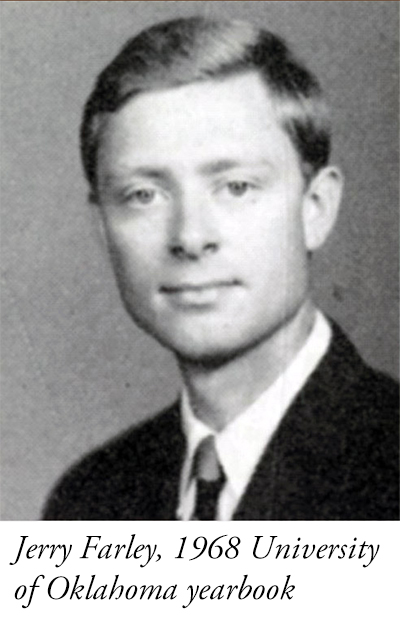 “I was a pretty good student,” Farley said. “I’m not brilliant but I knew how to study and I knew how to prepare for tests.”
“I was a pretty good student,” Farley said. “I’m not brilliant but I knew how to study and I knew how to prepare for tests.”
The weekend of his graduation in 1968 his father took a message from OU’s bursar.
“I thought maybe I hadn't paid a parking ticket and they weren't going to let me graduate on Sunday,” he said. “On Monday morning I went to the bursar's office, and it turned out they had a job opening and a faculty member recommended me. The bursar interviewed me and hired me on the spot.”
That started his journey to his dream job – chief financial officer at OU – but it would be almost 30 years before Washburn entered his radar screen.
“Did I have a vision I was going to be president of a university? Not even close,” Farley said.
Service and Learning
The Vietnam War draft halted his work at OU, but he didn’t stop growing and learning as the Army accepted him into the drill sergeant academy. A student once again, Farley excelled at anything that wasn’t physical but struggled with things like throwing a hand grenade. His three roommates in the barracks excelled at the physical but struggled with the written tests.
“My roommates said, ‘Why do you have all those good grades? Are you cheating?’ I said, ‘No. Just preparing for a test.’
They asked for my help with the tests, and they would help me learn the rest. When we finished the program at the academy, I was number 1 and they were number 2, 3 and 4. I helped them, and they helped me. I’m still proud of that,” Farley said.
After graduation, Farley was assigned to stay in the drill sergeant academy to teach and develop lesson plans.
“I really became a military man at the time,” Farley said. “I worked with some of the best people I’ve ever been around. They were top notch, and I learned a lot from them.”
Continuing Education
After his service, Farley returned to his job at OU, enrolled in the university’s MBA program and aspired for bigger roles.
“It was clear if I wanted to stay in higher education, I would need to have a doctorate,” he said.
He did just that and held several roles for the next 27 years. In 1974 he became controller at OU and in 1981 he became associate vice president for administrative affairs. He joined Oklahoma State University in 1986 as vice president of business and finance. He returned to OU in 1989 and held two vice presidential positions before taking the presidency at Washburn in July 1997.
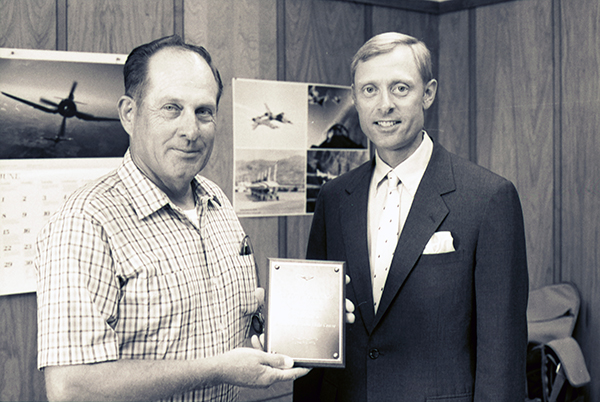
(Jerry Farley presenting a plaque in 1986 as vice president of administrative affairs at the University of Oklahoma)
Farley heard about the Washburn job because of Tom Ellis, ba ’75, a Washburn graduate who worked at OU. Farley was on a trip in Washington, D.C., and working near the firm managing Washburn’s presidential search. He walked in unscheduled and talked to the representative for about an hour.
“I said, ‘You know, I might be interested in this,’ and she said, ‘Give me a resume by tonight because I’m going to Topeka tomorrow morning.’
“But I was still thinking, ‘President of a university; do I really want to do that? Do I know what that involves?’”
The committee thought so and the regents offered him the job, which, of course, he took.
Putting Living and Learning Together
“The first thing we decided to do was increase enrollment and change our identity to a residential experience,” Farley said.
Within the first years he created the vice president for student life position, reinvigorated athletics and built the Living Learning Center, Art Building and Student Recreation and Wellness Center. The LLC did not have everyone’s support at first.
“I wanted it in the heart of campus so everybody would see it and want to be a part of it,” Farley said. “Others worried what it may look like to have people playing Frisbee out on the lawn. By the time we finished that building, everyone was on board.”
The 400 beds in the LLC filled up quickly, and since then, Washburn has built Washburn Village and Lincoln Hall, increasing residential living opportunities currently to about 800 people.
“We made those changes and have been thinking more residential every day,” he said.
Getting Technical
In the mid-2000s, Farley led Washburn on a bold opportunity – taking over Kaw Area Technical School from Topeka Public Schools. The campus, three miles northwest of Washburn University, enrolled high school students and adults earning technical and professional certificates. Farley and his leadership team spent about four years devising a way to make that campus part of what Washburn offers. In 2008, KATS became Washburn University Institute of Technology. The merger continues the technical education and gives students a direct route to associate degrees and more offered at Washburn University.
“I am really proud of Washburn Tech,” Farley said. “When we were planning this, other four-year schools looked at that and said, ‘You have a nice little arts and sciences campus and a nice reputation, and you are going to sullen it with tech.’ I did not view it that way at all, and I think it has proven to be phenomenally successful.”
Washburn Tech continues to adapt the programs offered, and relationships with area businesses ensure it produces well-trained graduates for the workforce. Washburn Tech East opened in 2019 to give east Topeka residents better access to adult education and training.
“We must remain responsive and agile to the needs of the workforce around us,” Farley said. “I think Washburn Tech is one of the best things we have done.”
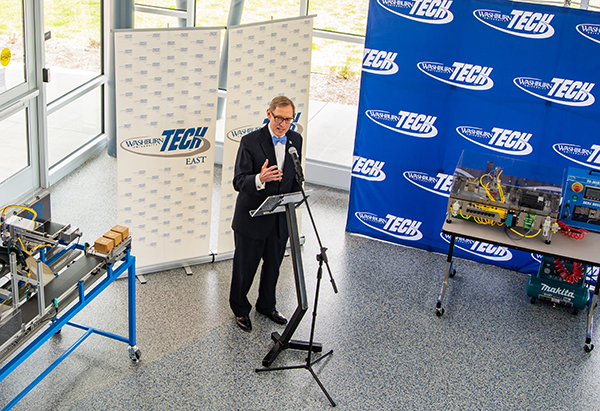
(Jerry Farley spoke at Washburn Tech East on April 21, 2021, to announce a partnership with Mars Wrigley and the Kansas Board of Regents to create a certified production technician program. Photo by Jeremy Wangler)
Community Investment
“A personal initiative of mine was to bring the city of Topeka a little closer to Washburn because that’s where we get our funding,” Farley said. “We’ve got to show the citizens this is a good investment.”
When Farley started, Washburn’s funding came from a property tax levy. He worked with the Kansas legislature to change it to a city sales tax. He also worked with his team to create what they called a smoothing fund.
“In years when collections were up, we took what was above the budget and put it in a rainy day account,” Farley said. “When we were down, we pulled money out of the fund. We’ve had some down years that were difficult, but we had the money to cover it. It stabilized our funding, and that model is still working.”
During Farley’s time, he’s overseen the construction of the KBI Forensic Science Laboratory on campus, which put a high-tech crime lab on campus and gave Washburn students access to criminal justice learning spaces. The Pine Ridge Family Health Center opened to meet a need for health care in an underrepresented area and gave doctor of nursing practice students a place to practice. When a cosmetology school in Topeka went out of business without warning, Farley proposed and carried out the creation of a cosmetology program through Washburn Tech. Those students were back in a classroom within a few weeks. Washburn remodeled Morgan Hall to include a Welcome Center to serve as the front door to the main campus. Washburn created and maintains the landscaped boulevard where SW 17th Street passes campus.
“We want to make sure students and parents like us,” Farley said. “We also want donors, community members and our legislators to like us. You have to create good relationships with all those people, and it makes a tremendous difference in my in my opinion.”
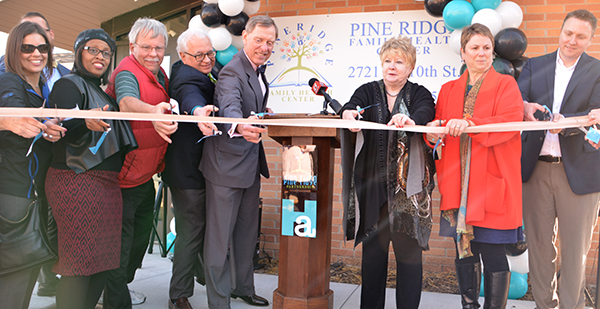
(Jerry Farley and guests cutting the medical tape to open the Pine Ridge Family Health Center in Topeka. Photo by Jeremy Wangler)
Legacy, Advice and Praise
A 1998 article in The Chronicle of Higher Education said experts considered Farley one of the top three financial minds in higher education around the country. He was inducted into the Oklahoma Higher Education Hall of Fame in 1997, and his induction biography said he was “nationally known for his expertise in higher education finance.” While at Washburn, he was named the Distinguished Kansan of the Year and a Distinguished Citizen by Boy Scouts of America. He’s in the Topeka Business Hall of Fame and has served on the boards of many civic and charitable organizations.
Farley plans to stay active in his president emeritus position with passions that include building up the international student population. He plans to keep teaching continuing education courses for higher education leaders around the country. His wife, Susan, wants him to take up golf, and he wants to get back into flying airplanes – he used to own a single-engine Beechcraft Bonanza.
He knows he left a legacy at Washburn in many ways, but he also knows the next president could take Washburn in different directions. He’s fine with that and offers some advice.
“Somebody's going to have this job soon, and that person will have different characteristics than I have, and it will change the direction of the university,” he said. “Do not try to make us look like the university you came from. If you've got an idea you think is a good idea, sell it to Washburn. Make Washburn see the wisdom of the idea. Spend a long time listening. You start that on day one, but you don't have to finish listening on day three.
“Look at me. I knew nothing about Washburn and I survived for 25 years.”
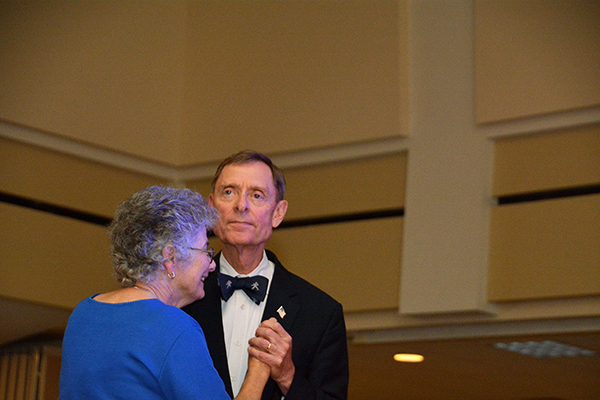
(Jerry and Susan dancing together at President Farley's 20th anniversary party on Oct. 21, 2017. Photo by Jeremy Wangler)
A quarter century brought enumerable changes to Washburn. The physical landscape is the most visible, but the mark he left on the academic programming, the financial practices and his engagement with alumni might even last longer than any building.
“A few years were tough, but the others have been really good,” he said. “We just happened to be at the right time and place, and the board of regents and faculty agreed with what we were doing. But I recognize absolutely all the things that happened are not because of me. It is a whole bunch of other people who are doing amazing things for Washburn.
“The support of Washburn’s family – students, alumni, faculty, staff, regents and community donors, everyone working together – is what makes this such a special place. It has been an absolute privilege to have served as president for 25 years.”